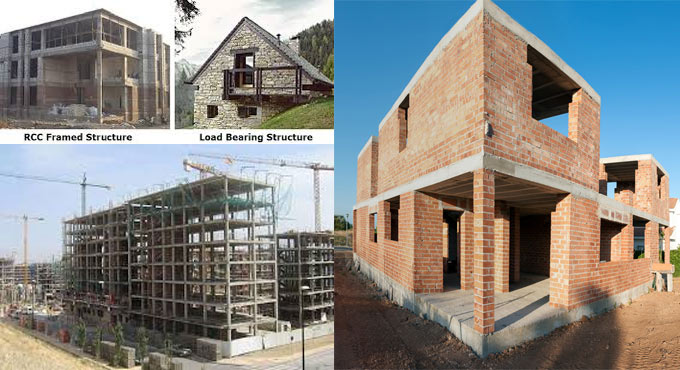
Variations among Load bearing and framed structures

Superstructure is the section that situates over the ground. It comprises of walls, columns, beams, floors, roofs, doors, windows, lintels, staircases.
Types of super structures on the basis of load transmission
The super structures are categorized as follow :-
a. Load bearing structures
b. Framed structures
Load bearing structures:
Under this type of structure, the load on the structure is delivered in vertical direction through walls and then the wall transmits these loads and the self weight. These types of constructions are mostly found in residential buildings where the dimension of rooms is fewer. The residential buildings up to ground + 2 floors is constructed inexpensively with such structures.
Framed structures:
Under this type of structures, a frame work of columns and floors are constructed initially. Then the walls are erected to divide the living area.
The walls are dependent on self weight only. These types of structures are suitable when there are lots of stories in a building as well as when bigger areas should be covered free from walls.
Variations among load bearing and framed structures
Load bearing structure:
1. Construction cost is minimum
2. Best fit up to three stories
3. Walls are thicker and consequently floor area is curtailed.
4. Construction process is slow.
5. Once the construction is completed, it becomes difficult to modify the position of walls.
Frame structure:
1. The construction cost is higher
2. Ideal for different number of stories
3. Walls are thinner and as a result, more floor area can be utilized.
4. Rapid construction speed
5. If required, the location of wall may be modified.
6. Resistance to earthquake forces is good


